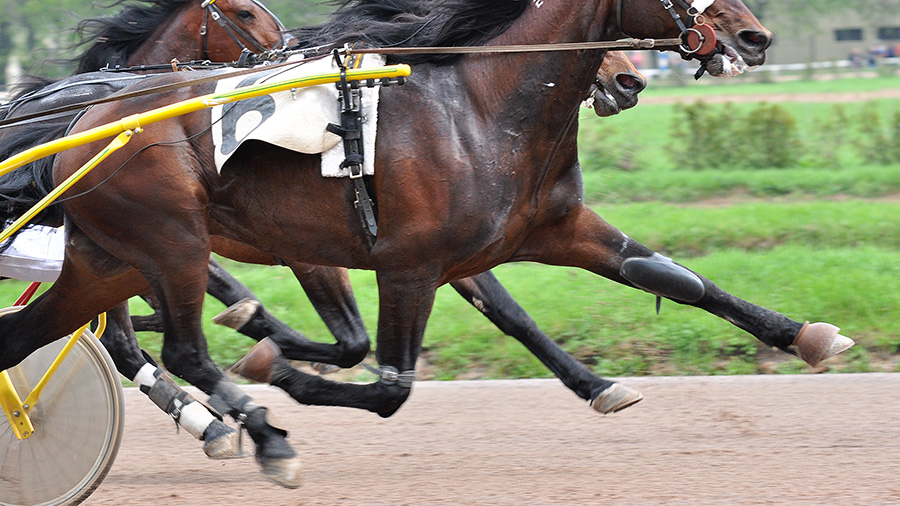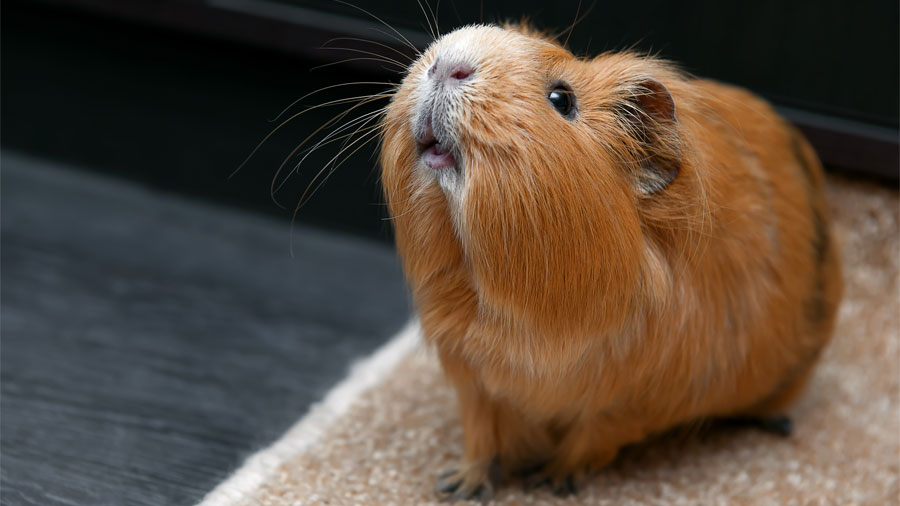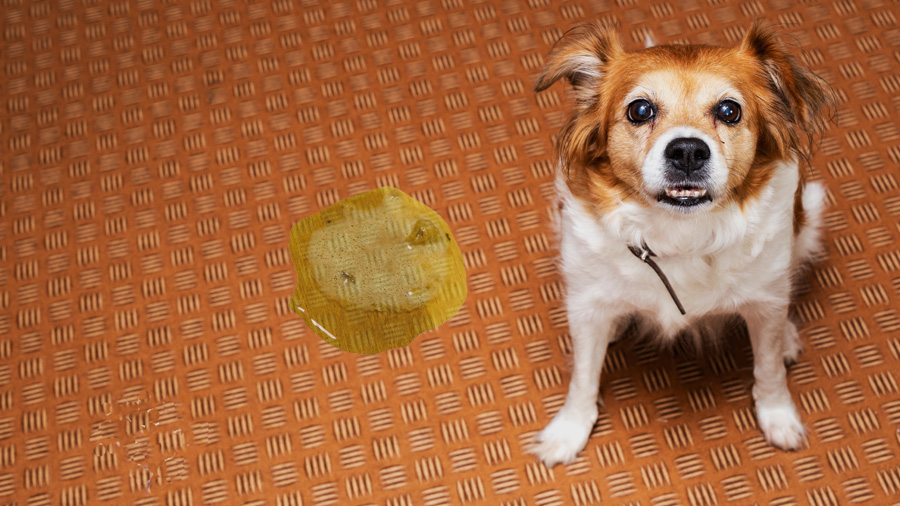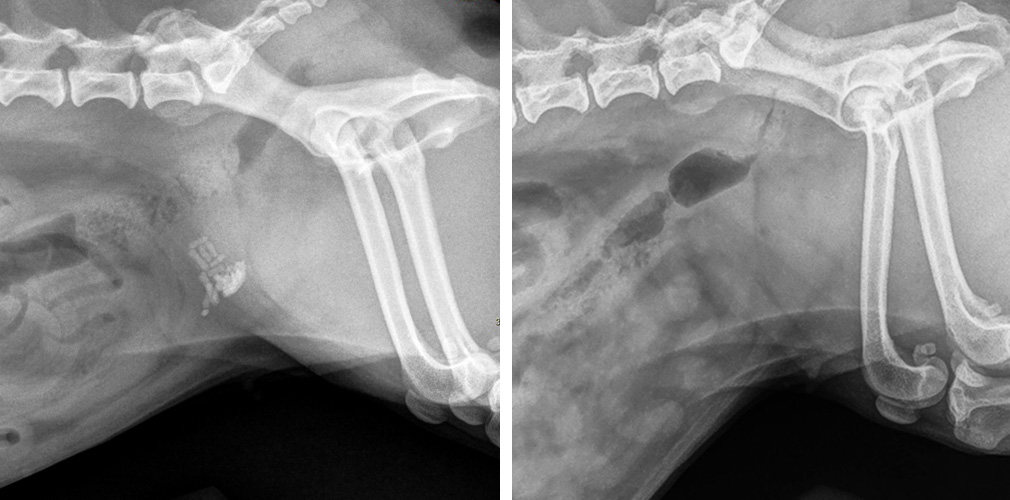Just like human athletes, athletic horses undergo a combination of physical demands, impacts, and repetitive stress that makes them prone to injury and lameness.
Dr. Annette McCoy, an equine surgeon at the University of Illinois Veterinary Teaching Hospital, shares her expertise on how to identify, prevent, and treat common causes of lameness in athletic horses. She serves as one of 10 members of the American College of Veterinary Surgeons’ Board of Regents, the governing body for this organization of 2,500 specialists.
Lameness and Musculoskeletal Conditions
“Musculoskeletal conditions that we see in athletic horses, including racehorses, tend to fall into two categories: chronic (long-term) or acute (sudden onset),” explains Dr. McCoy. “In either case, lameness is the presenting complaint. Lameness may range from mild to severe.”
Lameness refers to an abnormality of a horse’s gait or stance caused by pain, a mechanical problem, or a neurological condition.
“The most common cause of chronic lameness is osteoarthritis,” says Dr. McCoy, “while acute lameness is often caused by a fracture or by injury to soft tissue, such as a tendon or ligament.”
Osteoarthritis
“Osteoarthritis may occur as a “wear and tear” injury with age (sometimes called primary osteoarthritis) or secondary to an injury (called post-traumatic osteoarthritis),” Dr. McCoy explains. It is a chronic, degenerative condition that ultimately results in loss of articular cartilage in the joint.
Osteoarthritis is very common in older horses across breeds. However, it can also occur in younger horses, either because of excessive athletic use and injury or as part of a disease known as juvenile osteoarthritis, which likely has a genetic component.
“Unfortunately, by the time it is diagnosed on radiographs, osteoarthritis has usually progressed to the point where treatment can only address the symptoms,” Dr. McCoy states. “Common treatments for horses with lameness due to osteoarthritis include the use of oral non-steroidal anti-inflammatory drugs such as phenylbutazone or firocoxib, joint injections with steroids or biologic agents with anti-inflammatory properties, therapeutic trimming and shoeing, and joint supplements.” Alternative therapies include acupuncture or chiropractic work.
Dr. McCoy says that regular moderate exercise is also important and that stall rest often makes the problem worse.
“Often a multimodal approach to treatment is the most successful, but every horse is different. There is a lot of active research into ways that we can diagnose osteoarthritis earlier and treat it more effectively,” she says. “Ultimately, the goal is to develop a treatment that can reverse joint damage.”
Osteochondrosis and Lameness
According to Dr. McCoy, osteochondrosis is a very common condition in certain horse breeds, including Standardbreds.
“Osteochondrosis is a disorder that affects growing bones. It is really interesting because it affects not only horses but animals of many species, including humans, and it occurs in very specific locations within affected joints,” Dr. McCoy states.
Due to the prevalence of osteochondrosis and the popularity of Standardbreds in the Midwest, Dr. McCoy chose this breed as the subject of her research into this condition. She hopes that her findings will be broadly applicable across breeds and species.
“About 75% of Standardbreds have an osteochondrosis lesion at two months of age, but 75% of these lesions heal by one year of age,” Dr. McCoy says. “For lesions that don’t heal and go on to form a chip in the joint, surgical removal is the only treatment option.”
Dr. McCoy and her team are working to create a genetic risk panel that can help identify, early in a horse’s life, whether the horse has a low, moderate, or high risk of developing an osteochondrosis lesion that will require surgery.
“Such a panel could help owners make breeding decisions that reduce the overall prevalence of osteochondrosis,” says Dr. McCoy.
Lameness Caused by Injuries
Sudden onset injuries are usually easy to spot: the horse may be reluctant to move or may move with obvious asymmetry, such as a “head bob.”
“Chronic, subtle injuries may be harder to spot,” warns Dr. McCoy, “The horse may have a decrease in performance or may be reluctant to work as much as usual or in certain ways.”
Other behaviors that may indicate pain include reduced social interactions with herdmates or humans.
Limb Deformities at Birth
According to Dr. McCoy, it is not uncommon for newborn foals to have limbs that deviate from normal. Luckily, she says there are ways to lessen the risk and/or long-term effects of these deformities.
“Careful monitoring and early intervention are crucial for successful management of limb deformities in foals,” says Dr McCoy. “Some of these will resolve on their own as the foal grows and strengthens, some can be managed with conservative care like foot trimming and controlled exercise, and others require surgical intervention.”
To achieve the best outcome, Dr. McCoy recommends working with a veterinarian who can evaluate your foal’s specific needs and intervene appropriately. “Delaying intervention increases the risk of permanent deformities and poor athletic outcomes,” Dr. McCoy states.
Can We Prevent Lameness?
Dr. McCoy also conducts research into the role of early exercise on gait development, bone remodeling, and fracture prevention.
“This is an area that we are still actively researching,” Dr. McCoy explains. “We know that exercise is beneficial for musculoskeletal health, but we don’t know what exercise regimen—in terms of duration, intensity, and timing—is best for injury prevention.”
Dr. McCoy and her team have completed a study in very young foals that suggests there is a minimum threshold of exercise that results in measurable changes in bone remodeling when compared with bone remodeling in non-exercised foals.
“Interestingly, some horses seem to respond more robustly to exercise than others, which is also a phenomenon that has been seen in humans,” states Dr. McCoy.
Other Preventive Measures
“Equine athletes are like human athletes in many ways,” Dr. McCoy explains. “They need to warm up before a workout and cool down afterwards. Core strengthening exercises and stretching can help prevent injuries.”
It is important to gradually work up to harder and longer workouts rather than try to go from couch potato to marathoner instantly.
Another important strategy involves being attuned to what is “normal” for your horse. Dr. McCoy says that by knowing your horse well, you can pick up on subtle changes rather than overlook them early in the course of disease or injury.
“Appropriate rest and rehabilitation must occur for any suspected injury. We never recommend trying to ‘play through it,’ ” Dr. McCoy stresses. “If you think there is a problem, have a veterinarian examine your horse sooner rather than later.”
By Cassidy Kelly




